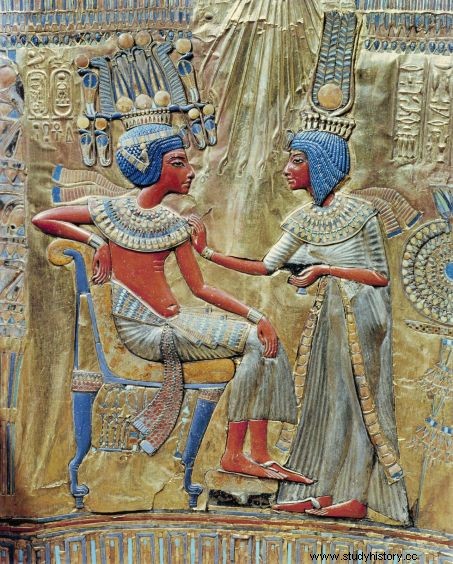Renowned Egyptologist Zahi Hawass believes he has located a new tomb in the Valley of the Kings. It could be that of Ankhesenamon, the wife of Tutankhamun...

General view of the Valley of the Kings and its pharaonic tombs, near present-day Luxor, Egypt.
NECROPOLIS. A new mystery? Egyptologists believe they have located an unknown tomb in the Valley of the Kings, the Theban necropolis on the west bank of the Nile near Luxor, Egypt. According to Zahi Hawass, the famous Egyptian archaeologist, former head of the Supreme Council of Egyptian Antiquities (2002-2011) and former Minister of State, it could be the final resting place of Ankhesenamon, the "great royal wife". and sister of Tutankhamun, ruler of the 18 th dynasty (1570-1293). What is for the moment only a hypothesis, published in July 2017 in an interview granted to the Italian edition of National Geographic* . It is based on recent radar detections carried out between February and May 2017 by a team of Italian specialists from Livorno, under the supervision of Ahmed El-Laithy, director of the Mallawi Museum, in Al-Minya (Egypt). These exploratory surveys of the subsoil during electrical resistivity measurements ERT (Electrical Resistivity Tomography ) would have been interpreted as the possible underground entrance to a burial chamber in the western valley, in an area where Zahi Hawass had already identified "foundation deposits" in 2009:these pottery elements and other votive objects were deposited by the ancient Egyptians during rituals before each important construction. To date, no excavations have been carried out to confirm these presumptions.

Tutankhamun on his throne, alongside his royal wife Ankhesenamon. © Robert Harding/AFP
Cautious experts
“We're sure there's a grave there, but we're not sure who it belongs to” , a more cautious Zahi Hawass later told Live Science July 18, 2017. The hypothesis that it could be Ankhesenamon would have been born from its proximity to the tomb of the pharaoh Aÿ (KV 23), successor of Tutankhamen. The young queen is said to have married Aÿ after the sudden death of her first husband, the young pharaoh in the golden mask, then 19 years old (1324 BC). But not all experts share this opinion. Tutankhamun's succession is indeed one of the most obscure in the entire history of ancient Egypt. “The evidence that Ankhesenamon was the wife of Aÿ is very tenuous. The faience ring with the coronation name of Aÿ and that of Ankhésenamon – called the Blanchard ring – is insufficient to affirm that there was a “marriage”. This "association" can simply be linked to Tutankhamun's funeral. According to inscriptions found in monuments dating from his reign, Aÿ had only one wife, Tey “, recalls the Egyptologist Marc Gabolde, lecturer at the Paul Valéry-Montpellier III University, insisting on the caution to be had, both on the possible existence of a new tomb and on the identity of its possible occupant. “We know nothing about the end of Ankhesenamon” , adds the Egyptologist. Excavations could nevertheless soon be authorized to verify the possible presence of a hypogeum. Let us recall that these geophysical investigations carried out under the aegis of the department of applied sciences of the Polytechnic University of Turin (Italy) are directly linked to the research carried out on the possible presence of an unknown cavity in the tomb of Tutankhamen (KV 62).
* Comments published in National Geographic, Italian edition, July 7, 2017 :“Sì, accanto alla KV23, la tomba di Ay, anziano successore di Tut e presunto padre di Nefertiti. I test effettuati tra febbraio e maggio dai tecnici di Livorno con l'ERT hanno rilevato conduttive anomaly nella roccia lì dove Hawass ha individuato i foundation deposits di un'altra tomba reale che potrebbe belongere ad Ankhesenamon, la giovane moglie di Tut (e figlia di Nefertiti). Rimasta vedova sposò proprio Ay, che seguendo il ragionamento sarebbe quindi suo nonno. Un altro matrimonio sterile tra consanguinei, epilogo di una lunga serie di incesti che segnò di fatto la fine della XVIII dinastia.”
